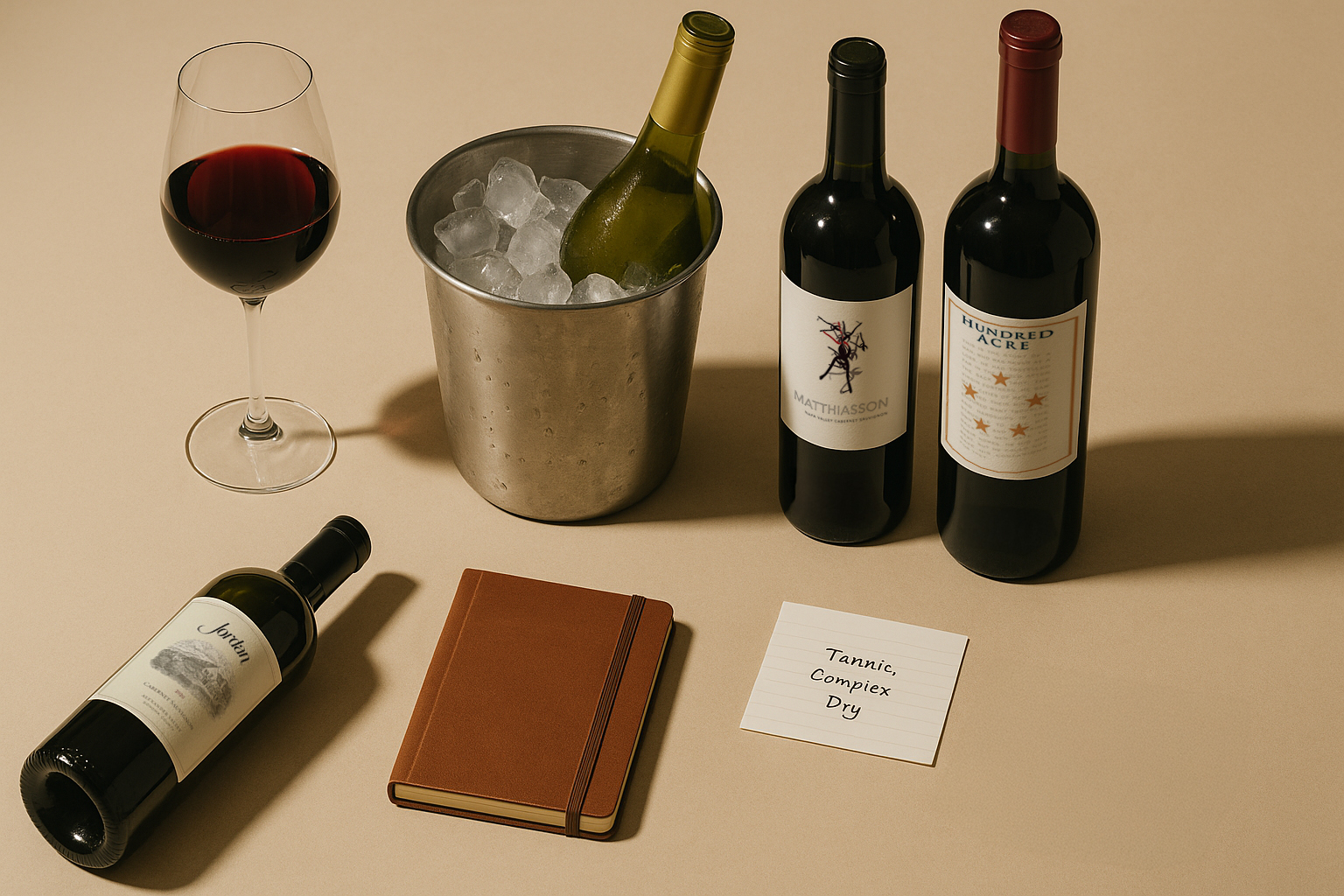

Are You Making These 5 Common Wine Mistakes?
Even smart wine drinkers make simple mistakes that hold them back.
Maybe you’ve poured a glass and thought, This seems flat. Is it me?
It’s not. Tiny missteps—like wrong temps, overpouring, or storage habits—can dull even a great bottle. And if you don’t fix them, you’ll keep missing what the wine is actually trying to show you.
But once you adjust a few habits, your wine starts tasting clearer, fresher, and more alive. You don’t need fancy gear or expert training—just a better routine.
Let’s walk through five common mistakes and how to fix them right now.
What you'll learn today
- How to get more flavor out of every bottle
- What habits are quietly working against you
- Simple fixes that make wine taste better instantly
1. You’re Drinking Wine at the Wrong Temperature
Most wine drinkers pour straight from the fridge or serve reds at room temp. But the wrong temperature changes how wine tastes. Too cold? You mute the aromas and dull the flavor. Too warm? The alcohol stands out and the wine feels flat or soupy.
White wines (and rosé) are often too cold. Red wines are usually too warm. A good rule of thumb: serve reds slightly cooler than room temperature and whites a little warmer than fridge temp.
Try this:
- Chill red wines for 15–20 minutes before serving.
- Take whites out of the fridge 10–15 minutes before pouring.
- Aim for 55–65°F for reds, 45–50°F for whites.
You don’t need a thermometer—just use time and feel. Cooler reds taste fresher. Slightly warmer whites show more texture and aroma. Fixing the temperature gives you better wine without spending more money.
2. You’re Pouring Too Much in the Glass
Filling your glass to the top might seem generous, but it kills the experience. Wine needs space to move and breathe. When the glass is too full, there’s no room to swirl—and swirling helps release aromas, which is half the tasting experience.
When you overpour, the wine sits still. Aromas vanish in thin air. It smells flat and closed off. You might think the wine is boring, when it’s just suffocating.
Here’s what to do:
- Pour only to the widest part of the bowl—usually about 4 ounces.
- Leave plenty of space for swirling.
- Swirl gently, then smell before you sip.
You’ll notice a big difference right away. More space = more aroma = more flavor. You get the full picture of the wine. Plus, smaller pours help you taste more wines in one sitting without overdoing it. A proper pour isn’t about being fancy—it’s about giving the wine room to show up.
3. You Assume Expensive Wine Is Always Better
It’s easy to think the $100 bottle must taste better than the $20 one. But that’s not always true. A higher price can mean better farming, longer aging, or lower production—but it can also mean expensive marketing, packaging, or just hype.
Many people avoid affordable wines because they don’t want to look “cheap.” But you’re the one drinking it—so your palate matters more than the price tag.
Instead of assuming, compare:
- Try two wines side by side, one pricey, one not.
- Taste first, then look at the label.
- Pay attention to what you actually enjoy.
You’ll find some expensive wines that truly are worth it. You’ll also find great $15–30 bottles that beat out $70 ones in blind tastings. Training your palate means learning to trust your own senses—not the shelf tag. Stop chasing prestige and start chasing flavor.
I wrote about this in a previous issue, which you can read **here.**
4. You’re Storing Wine in the Kitchen
The kitchen is the worst place to store wine. It’s hot, bright, and full of vibration—three things wine hates. Bottles left on the counter or above the fridge get cooked over time. Even if you don’t notice it at first, the wine slowly breaks down.
Wine likes cool, dark, still spaces. Temperature swings and UV light speed up aging and dull the flavor. A bottle that was balanced and fresh can taste flat, tired, or off.
Do this instead:
- Store wine in a closet, basement, or cabinet away from appliances.
- Keep bottles on their side if they have corks.
- Avoid temperature extremes—50–60°F is ideal.
If you’re buying nicer bottles or holding wine for more than a few weeks, it’s worth getting a small wine fridge. But even without one, you can do better than the kitchen counter.
Good storage protects your investment—and makes sure the wine tastes how it should.
5. You Think You Need to Sound Like an Expert
Wine talk can feel intimidating. Maybe you’ve stayed quiet in tastings or repeated words you’ve heard—“oaky,” “tannic,” “dry”—without knowing what they really mean. But the truth is, wine literacy isn’t about using the “right” words. It’s about learning to trust your senses.
The best tasters aren’t trying to impress anyone. They’re paying attention to what they smell and taste. And they’re using simple, honest language to describe it.
Here’s how to start:
- Focus on what you notice first—fruit, spice, herbs, earth.
- Don’t guess. Just describe: “smells like strawberries,” “tastes sharp,” “feels smooth.”
- Compare wines side by side to spot differences more clearly.
Every time you taste, you’re building flavor memory. You don’t need permission or a fancy title to have an opinion about wine. You just need practice. The more you speak up, the sharper your palate gets.
Wrap-Up
These five mistakes are easy to fix—and making just one change can improve how your next glass tastes. You don’t need to be perfect. You just need to stay curious, keep tasting, and pay attention.

